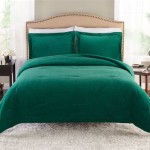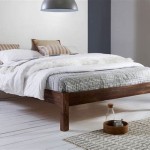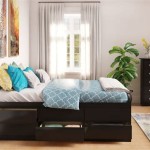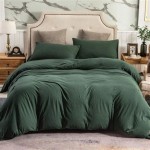Essential Factors to Consider When Choosing a Foam Mattress for a Queen Bed
Finding the perfect foam mattress for a queen bed requires careful consideration of several key factors that affect comfort, support, and durability. To ensure a restful and rejuvenating sleep, here's a comprehensive guide to essential aspects to keep in mind when making your selection:
Density and Firmness
Density, measured in pounds per cubic foot (PCF), indicates the amount of foam material used in the mattress. A higher density generally translates to increased durability and support, while a lower density offers a softer, more conforming feel. Consider your desired level of firmness, as it determines the mattress's ability to conform to your body and provide pressure relief.
Foam Type
There are several types of foam used in mattresses, each with unique properties:
- Memory Foam: Known for its conforming and pressure-relieving qualities, memory foam molds to your body, reducing pressure points.
- Polyurethane Foam: A versatile foam that offers a range of firmness options, from soft to firm. It's a common choice for mattresses due to its affordability and durability.
- Latex Foam: Made from natural rubber, latex foam is highly resilient and breathable. It provides excellent support and conforms to your body's shape.
Thickness and Profile
The thickness of the mattress affects its overall comfort and support. A thicker mattress generally offers better support, while a thinner mattress may be more responsive and contouring. Additionally, consider the profile of the mattress, which refers to the shape of its top surface. Some mattresses feature a flat profile, while others have a pillow top or Euro top for added softness and cushioning.
Edge Support
Edge support is crucial for preventing sagging and ensuring a stable sleeping surface. Look for mattresses with reinforced edges that prevent you from feeling like you're rolling off when sitting or sleeping near the edge.
Motion Isolation
If you share your bed, motion isolation becomes important. Foam mattresses excel in this area, minimizing motion transfer between sleepers. This feature allows you and your partner to move around or get in and out of bed without disturbing each other's sleep.
Temperature Regulation
Some foam mattresses incorporate materials that help regulate temperature, such as gel-infused memory foam or perforated latex foam. These materials allow air to circulate, preventing the mattress from overheating and ensuring a comfortable sleep environment.
Durability
Consider the durability of the mattress to ensure it withstands years of use. High-density foam and quality construction contribute to the mattress's longevity. Look for mattresses with a warranty that covers defects and premature wear.
Summary
Choosing the right foam mattress for a queen bed requires a thorough evaluation of density, firmness, foam type, thickness, profile, edge support, motion isolation, temperature regulation, and durability. By considering these factors and understanding their impact on sleep quality, you can make an informed decision and find the perfect mattress to meet your needs and provide a restful and rejuvenating night's sleep.

Plain White Queen Size Foam Mattress 182 9 X 167 6 10 2 Cm For Home

Premium Plus Mattress Queen Size 60 X80 Good Night Kid Montessori Bed Room

10 Inch Memory Foam And Spring Hybrid Queen Size Mattress Com

Queen Size Mattress Famistar 13 Inch Memory Foam In A Box Individual Innerspring Hybrid Bed Medium Firm Certipur Us Certified Com

Memory Foam Mattress Pad Bed Topper Massage For Twin Queen King Fruugo Tr

Sofree Bedding Queen Mattress 12 Inch Memory Foam In A Box Individual Pocket Spring With Motion Isolation And Pressure Relief Medium Firm Certipur Us Com

Queen Memory Foam Mattress Tsb Living

Orthopedic Pressure Relieving Memory Foam 8 Inch High Resilience Hr Mattress L 72 Urban Ladder

Bamboo Charcoal Infused Memory Foam Mattress Napqueen

Mattresses Uratex Es
Related Posts







